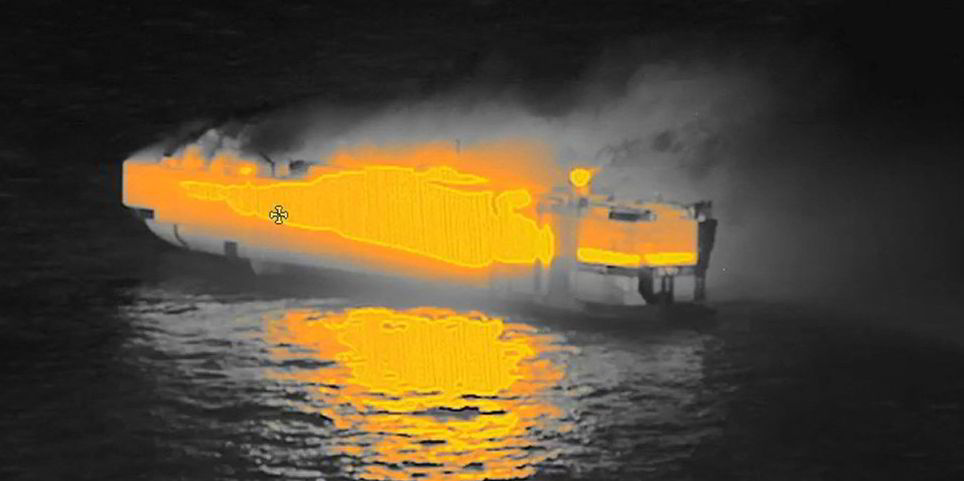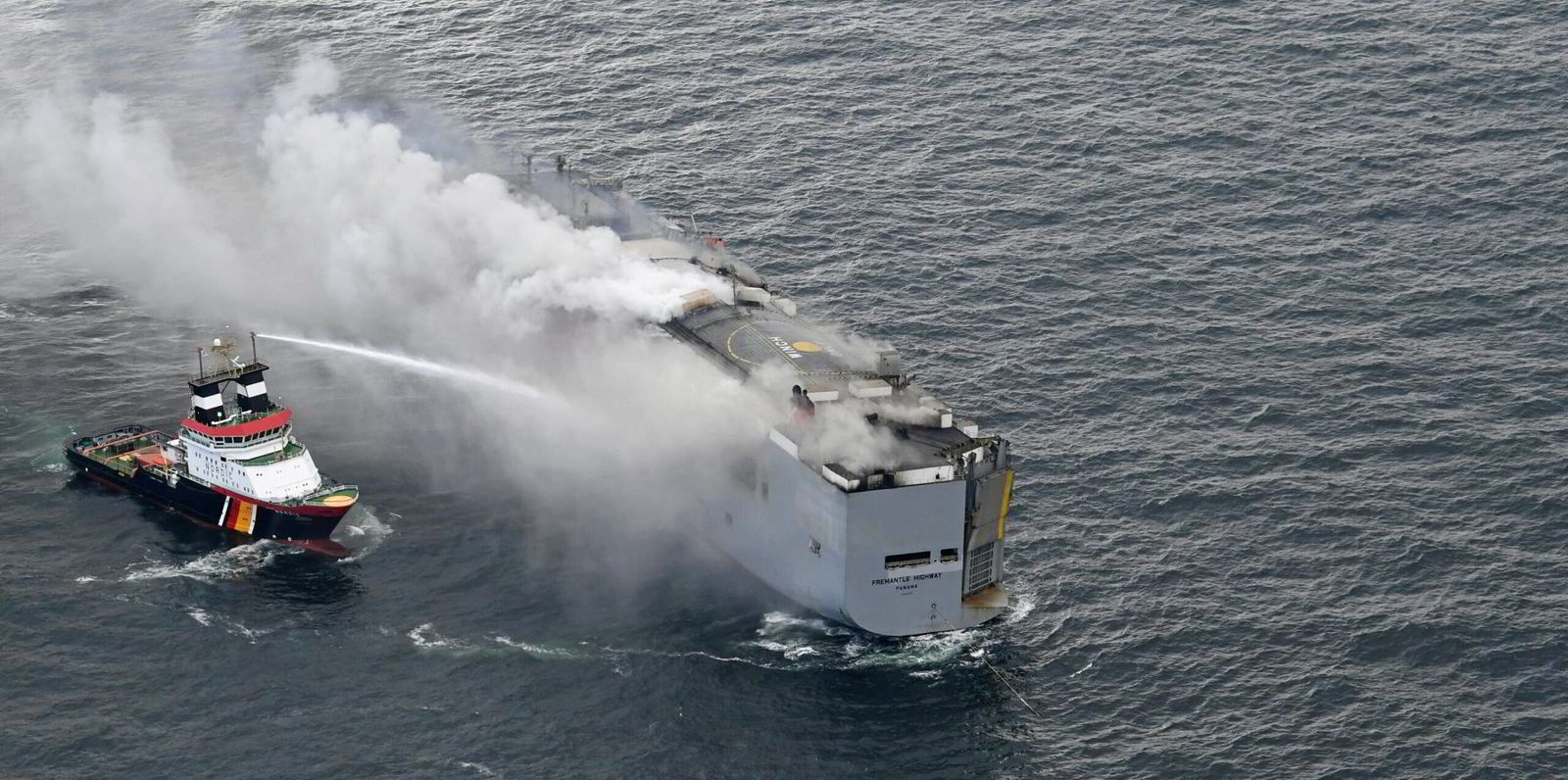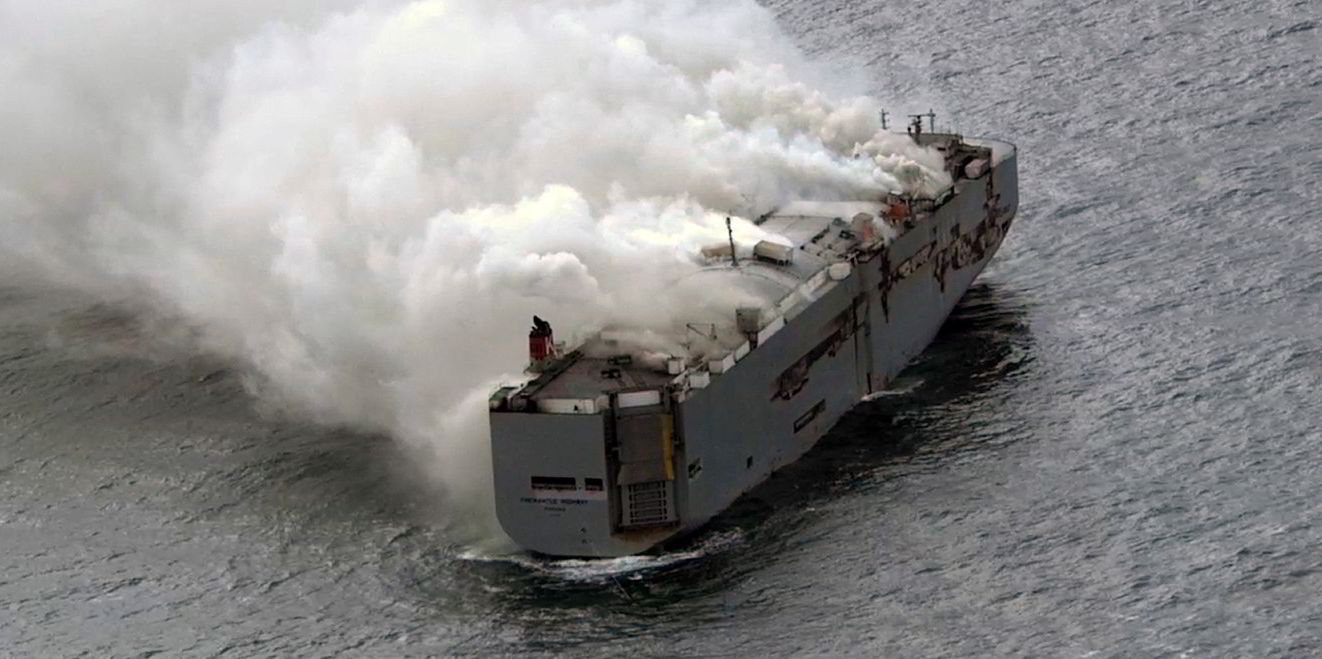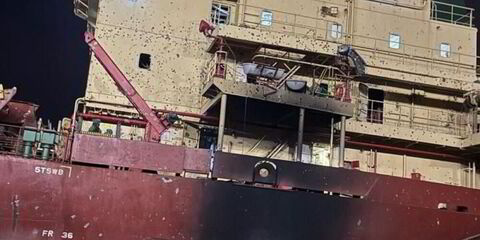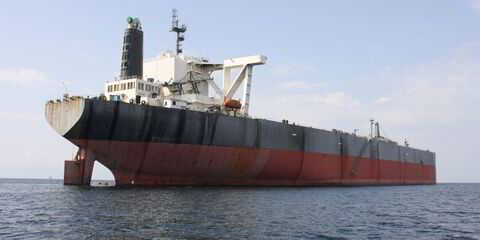K Line, the operator of the car carrier involved in a serious North Sea fire casualty, has revealed there were 498 electric vehicles (EVs) on board.
The figure is far higher than first estimated and appears to raise the likelihood that a lithium-ion battery in an EV either caused the blaze on the 6,210-ceu Fremantle Highway (built 2013) or added to its severity.
According to K Line, there were 3,783 vehicles on board, all of them new, including the 498 EVs.
The consignment, loaded in Germany, was heading to the Far East via the Suez Canal.
The ship was originally thought to be transporting only 25 EVs.
The fire broke out off the coast of the Netherlands this week, leading to the full evacuation of the crew and the death of one seafarer.
The vessel remains on fire but is under tow and has been taken outside the main shipping lanes.
According to Reuters, Dutch broadcaster RTL has released a transcript of an emergency responder to the incident saying that “the fire started in the battery of an electric car”.
The Netherlands Coastguard has insisted that the cause of the accident remains unknown.
Allianz Commercial released a report this week highlighting the growing risk of fire, indicating that 64 ships have been lost to fires in the past five years.
It pointed out that the rapid growth in the seaborne transportation of lithium-ion batteries independently, or in EVs, is an increasing safety concern.
“The main hazards are fire, explosion and ‘thermal runaway’, a rapid self-heating fire that can cause an explosion,” said Captain Rahul Khanna, commenting on lithium-ion battery transportation.
Initiatives such as LASH FIRE are attempting to reduce the risk of fires related to the carriage of lithium-ion batteries.
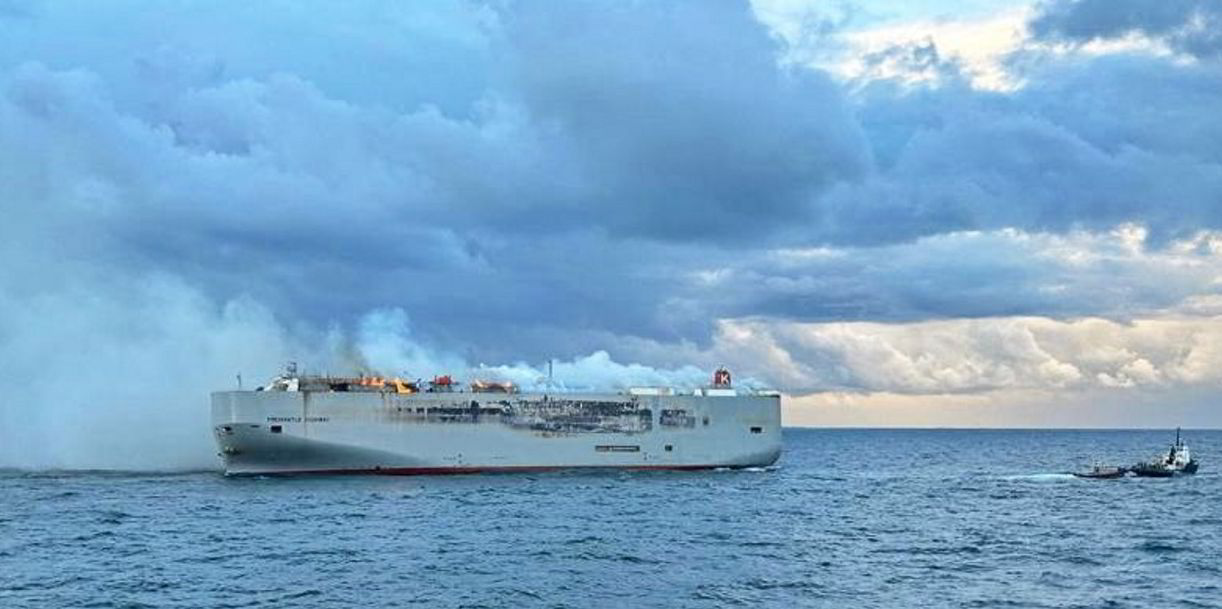
Rich McLoughlin, head of maritime engagement at Lloyd’s Register, said lithium-ion battery fires are a big safety worry for shipping as a potential risk and in terms of emergency response procedures.
“Although industry initiatives such as LASH FIRE have identified measures to respond to lithium-ion battery fires, the rapid onset of thermal runaway, the associated chemical fire and the potential ignition of explosive gasses — off-gassing — caused by either battery cell breakdown, failure of the battery management system or impact damage to the battery has, like any fire on board, the potential for serious consequence,” he said.
One important concern is the ability of ships’ staff to respond in time to prevent fire from spreading.
Major technology changes will be required to reduce the risk, McLoughlin said.
“Until the industry has either improved alternative battery technologies, greater screening and checks on potential mis/non-declared goods, or a better understanding of the stability/degradation of lithium-ion battery cells over time, these concerns will continue,” he said.
